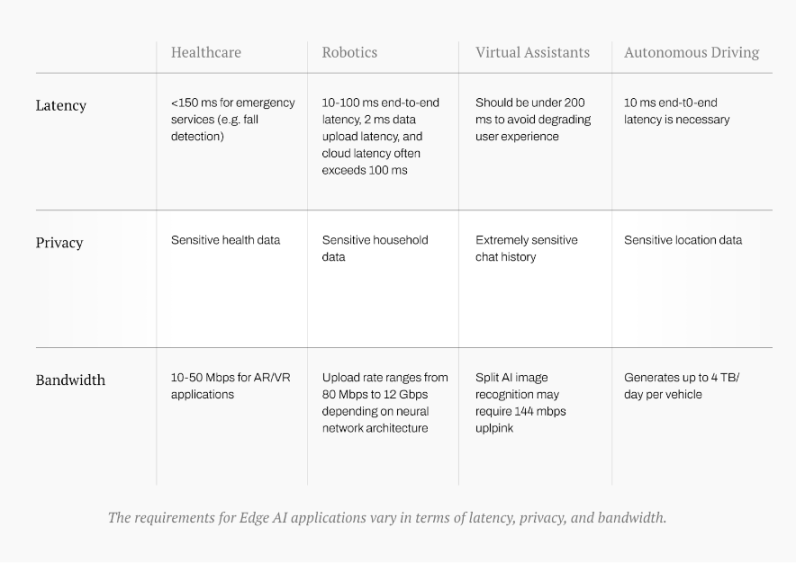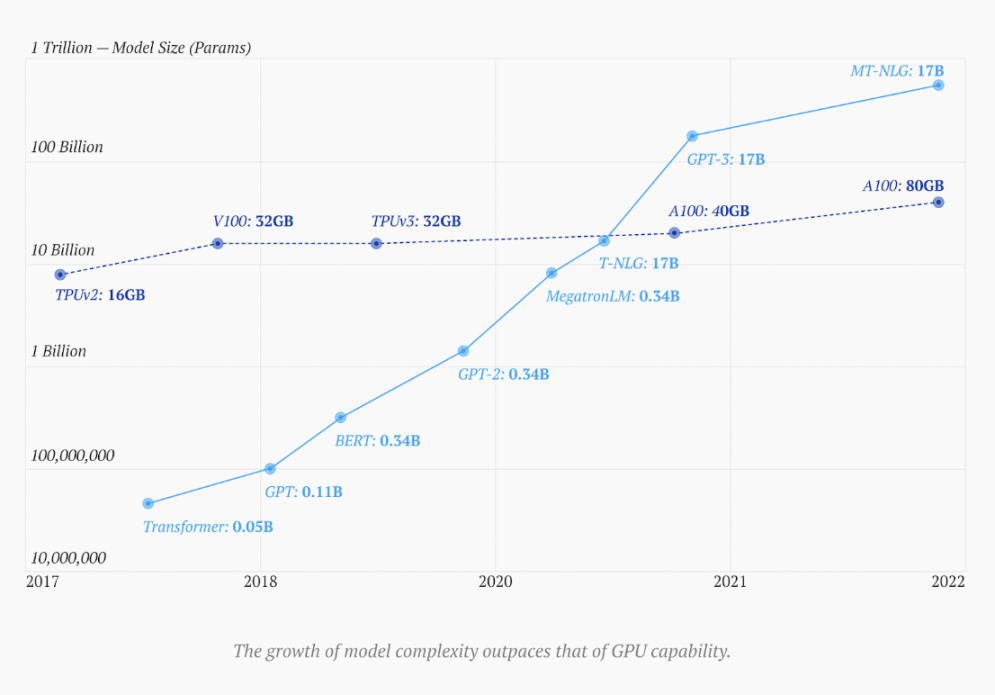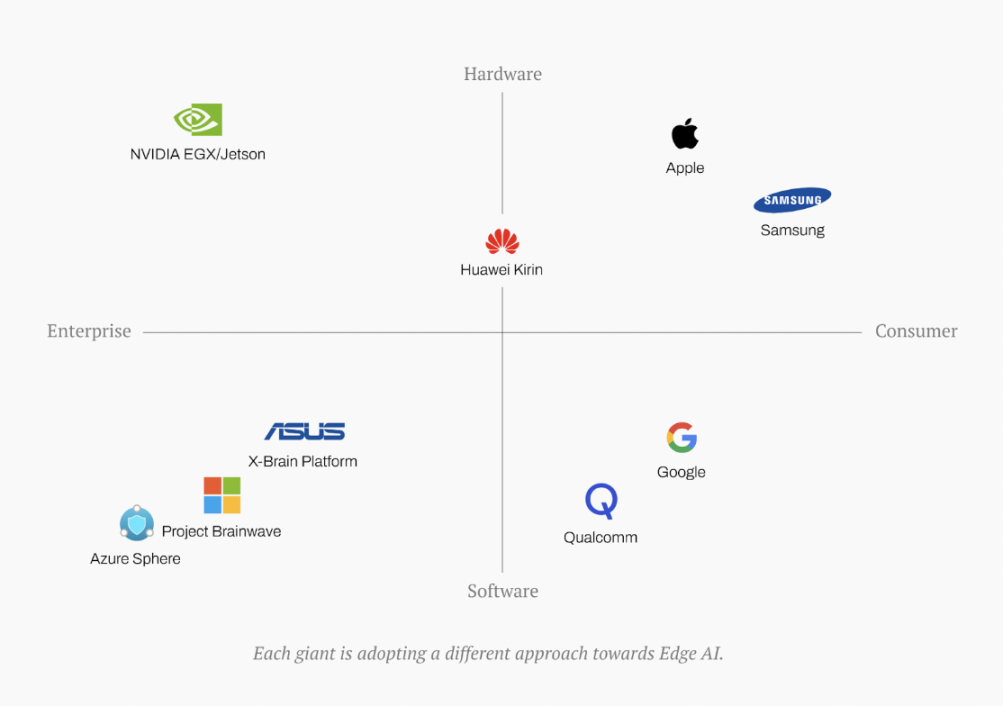Edge AI is revolutionizing the field of artificial intelligence by directly transferring data processing from centralized cloud servers to local devices.
Written by: Advait Jayant, Matthew Sheldon, Sungjung Kim, and Swastik Shrivastava
Compiled by: BeWater
With Meta's recent launch of the lightweight Llama 1B and 3B parameter models optimized for device-side applications, and Apple Intelligence set to release its new product at the end of October, we believe that edge AI and device-side AI will be the biggest topics of 2025.
Peri Labs and BeWater have collaborated to release a report of approximately 250 pages covering:
- The necessity of edge AI
- Core innovations in the field of edge AI
- Why edge AI needs cryptographic technology
- Understanding the core framework of edge AI
- The current state of edge AI and cryptographic technology
BeWater has translated this report into Chinese, with the key summary as follows:
The Rise of Edge AI
Edge AI is revolutionizing the field of artificial intelligence by directly transferring data processing from centralized cloud servers to local devices. This approach addresses the limitations of traditional AI deployments, such as high latency, privacy issues, and bandwidth constraints. By enabling real-time data processing on devices like smartphones, wearables, and IoT sensors, edge AI reduces response times and securely keeps sensitive information on the device itself.

Advancements in hardware and software technology have made it possible to run complex AI models on resource-constrained devices. Innovations such as dedicated edge processors and model optimization techniques have made device-side computing more efficient without significantly impacting performance.
Key Point 1: The rapid growth of AI has surpassed Moore's Law.
Moore's Law states that the number of transistors on a microchip doubles approximately every two years. However, the growth rate of AI models has outpaced the rate of hardware improvements, leading to an ever-widening gap between computational demand and supply. This gap makes the collaborative design of hardware and software essential.

Key Point 2: Major industry players are increasing investments in edge AI and adopting different strategies.
Major industry players are heavily investing in edge AI, recognizing its potential to transform fields such as healthcare, autonomous driving, robotics, and virtual assistants by providing instant, personalized, and reliable AI experiences. For example, Meta recently released models optimized for edge devices, and Apple Intelligence is set to launch its edge AI technology at the end of October.

The Intersection of Edge AI and Cryptographic Technology
Key Point 3: Blockchain provides a secure, decentralized trust mechanism for edge AI networks.
Blockchain ensures data integrity and tamper resistance through its immutable ledger, which is particularly critical in decentralized networks composed of edge devices. By recording transactions and data exchanges on the blockchain, edge devices can securely authenticate and authorize operations without relying on centralized entities.
Key Point 4: Cryptoeconomic incentive mechanisms promote resource sharing and capital expenditure.
Deploying and maintaining edge networks requires substantial resources. Cryptoeconomic models or token incentives can encourage individuals and organizations to contribute computing power, data, and other resources by providing token rewards, thereby supporting the construction and operation of the network.
Key Point 5: DeFi models facilitate efficient resource allocation.
By introducing concepts such as staking, lending, and liquidity pools from DeFi, edge AI networks can establish a marketplace for computing resources. Participants can provide computing power by staking tokens, lend excess resources, or contribute to shared pools to earn corresponding rewards. Smart contracts automatically execute these processes, ensuring fair and efficient resource allocation based on supply and demand, and implementing dynamic pricing mechanisms within the network.
Key Point 6: Decentralization of trust.
In a decentralized network of edge devices, establishing trust without central oversight is a challenge. In cryptographic networks, trust is achieved through mathematical means; this computation and math-based trust is key to facilitating trustless interactions, a characteristic that AI currently lacks.
Future Outlook
Looking ahead, there are still numerous innovative opportunities in the field of edge AI. We will see edge AI become an indispensable part of our lives in various application scenarios, such as hyper-personalized learning assistants, digital twins, autonomous vehicles, collective intelligence networks, and emotional AI companions. We are excited about the future!
免责声明:本文章仅代表作者个人观点,不代表本平台的立场和观点。本文章仅供信息分享,不构成对任何人的任何投资建议。用户与作者之间的任何争议,与本平台无关。如网页中刊载的文章或图片涉及侵权,请提供相关的权利证明和身份证明发送邮件到support@aicoin.com,本平台相关工作人员将会进行核查。




